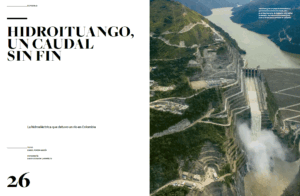La Mojana is a wetland territory with an area of over 500,000 hectares in the momposina region at the Colombian Caribbean, covering the plains watered by the Cauca and San Jorge rivers. It is a landscape of swamps interconnected by “caños” and variable flood zones that mitigate the spills caused by rain in the upper part of the rivers.
In its early days, this region was inhabited by indigenous Zenues who designed irrigation and drainage channels across the region. This people were used to fishing, harvesting, hunting, jewelry making, navigation and commerce, activities that remain today in the lives of its inhabitants.
In this area of Colombia is located Ayapel, a town founded more than 470 years ago at the edge of the swamp. Since 2010, 86% of its territory is permanently under water and even its inhabitants who have traditionally lived with the constant floods, their life is different now. Today, the natural drainage periods that facilitate settling the nutrients and stimulate the “subienda” no longer exist due to the changes in their habitat, geography and natural cycles.
Three water inlets («chorros»), two in the Cauca River and one in the San Jorge, keep seven of the ten districts and villages of the municipality constantly flooded. Over 40% of the inhabitants of this region approximately 25,000 people are affected. Besides this, the damage to the infrastructure involves the need for reconstruction of roads, dikes, schools and health centers that are destroyed because the permanence of floods and the state negligence to search for a solution.
[tg_grid_gallery gallery_id=»6427″ layout=»contain» columns=»3″]


